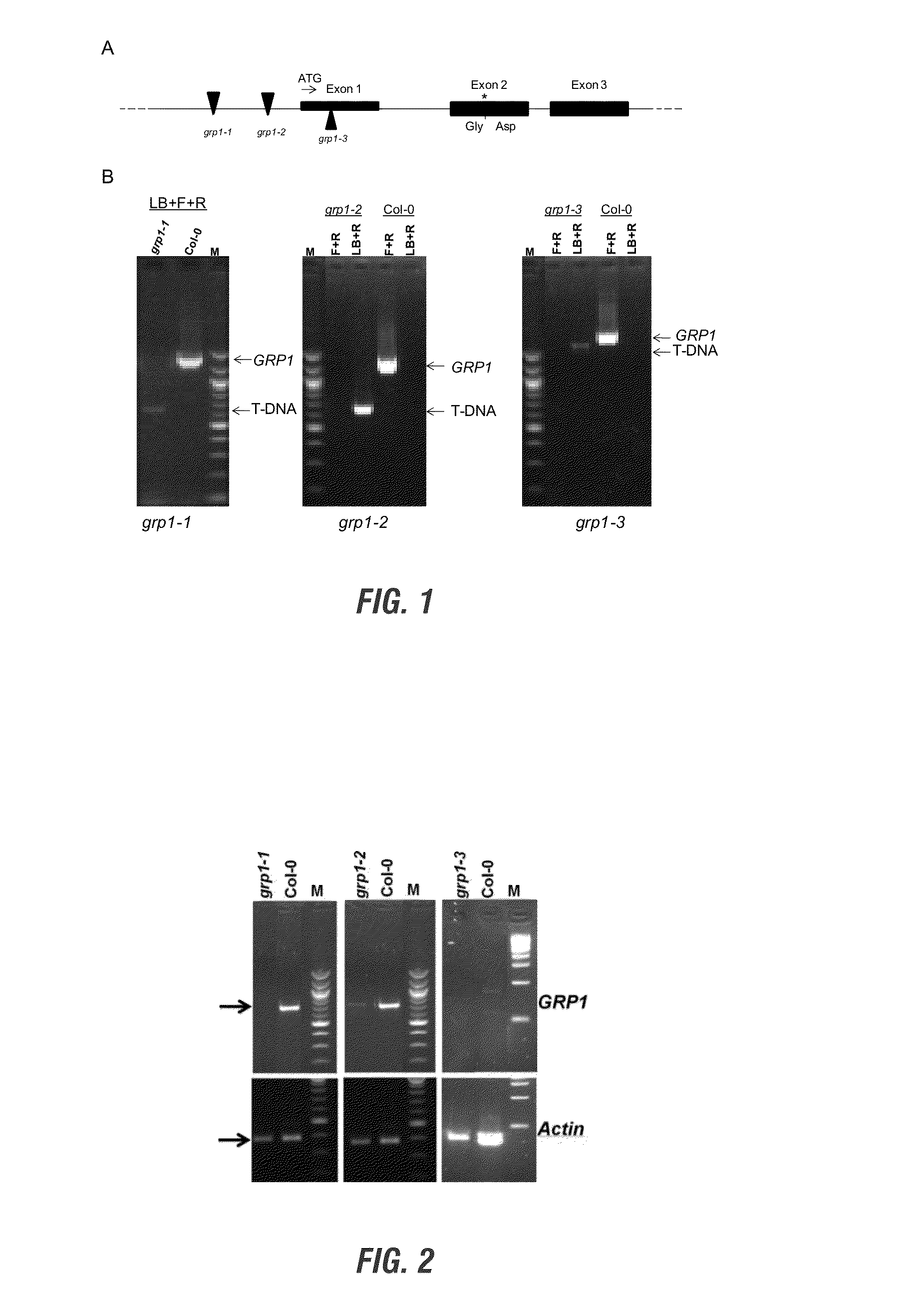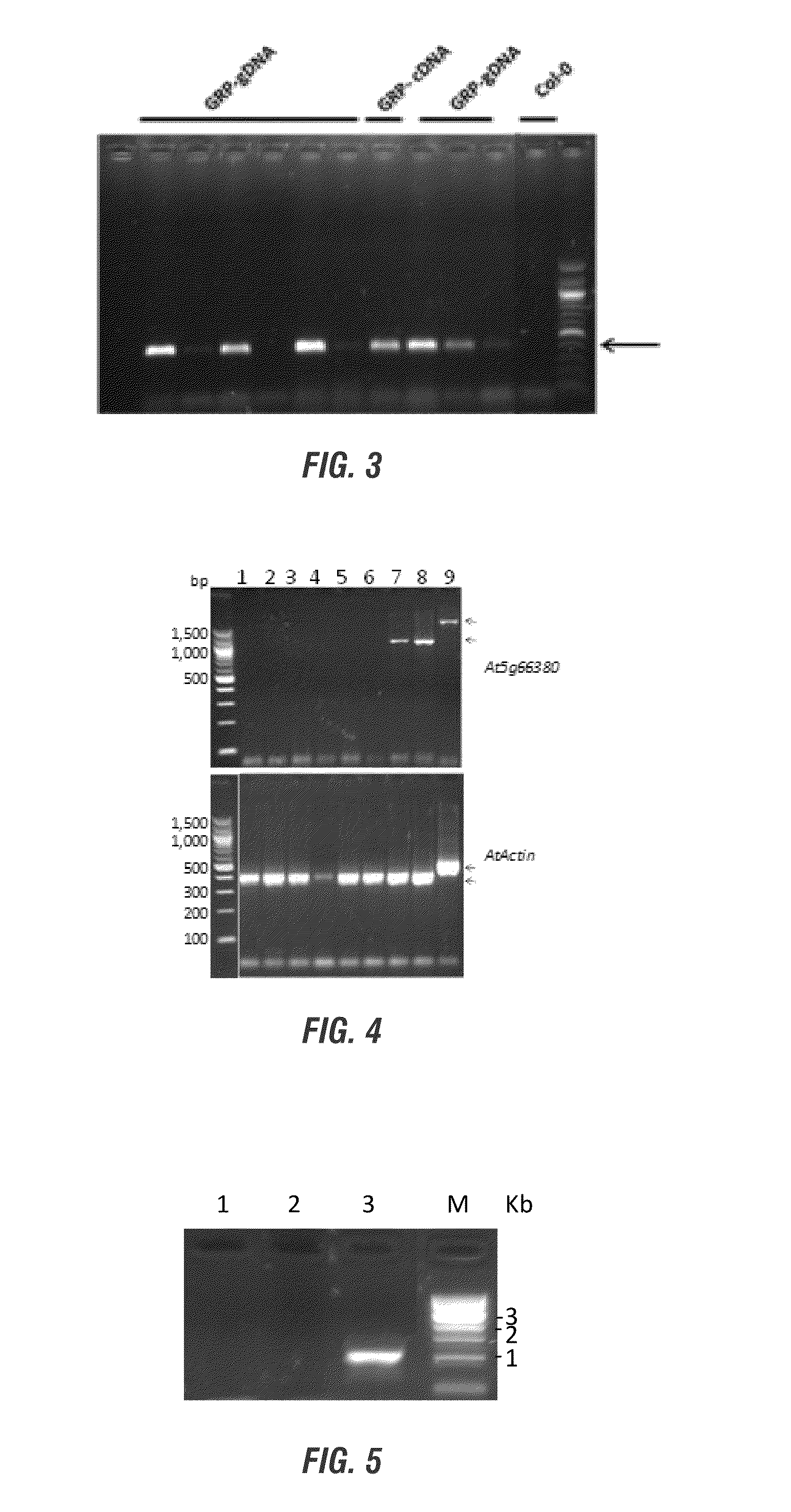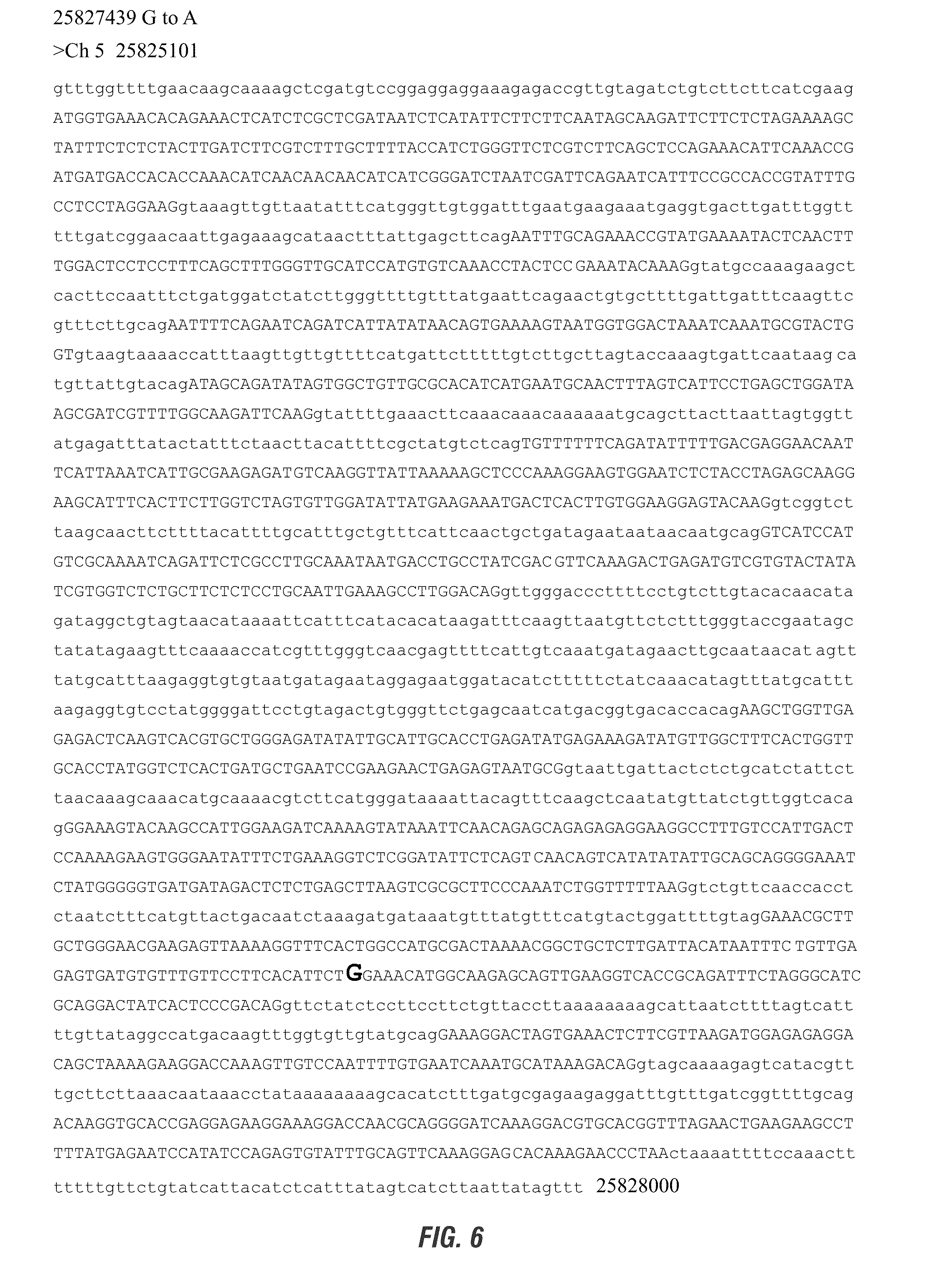Arabidopsis nonhost resistance gene(s) and use thereof to engineer disease resistant plants
- Summary
- Abstract
- Description
- Claims
- Application Information
AI Technical Summary
Benefits of technology
Problems solved by technology
Method used
Image
Examples
Example
Example 1
Five Arabidopsis Homozygous Mutants that are Infected by P. Sojae
[0171]We observed that single cells of the Arabidopsis mutant, pen1-1, but not that of its progenitor ecotype, Columbia, are penetrated by P. sojae. This observation suggested that the first line of defense in Arabidopsis against the pathogen is lost in this mutant. We used the chemical mutagen, ethyl methane sulfonate (EMS), to generate 3,556 EMS-induced mutant plants in pen1-1. Then we have screened over 3,000 M2 families developed from these mutants for possible loss of Phytophthora resistance in 24-well microtiter plates as follows. Seedling were grown in water for 10 days and then inoculated with P. sojae zoospores for 48 hours in wells of microtiter plates. Thereafter, dead cells of inoculated seedlings were stained with trypan blue dye (Koch and Slusarenko 1990) and identified by conducting light microscopy. We identified 30 putative P. sojae susceptible mutants. We tentatively named these putative mut...
Example
Example 2
[0198]Earlier it was shown by studying T-DNA insertion mutants that GRP1 is the candidate Pss1 gene (Table 3 and FIG. 2). Transformation of a T-DNA insertion grp1 mutant established that the GRP cDNA can complement the lost function of the GRP1 in this mutant (FIG. 10). We subsequently transformed the gene into the soybean cultivar, Williams 82. The progenies of two independent transforments have been evaluated by infecting with multiple P. sojae isolates and F. virguliforme Mont-1 isolate. The FIGS. 7 and 8 show that incorporation of Arabidopsis GRP1 in transgenic soybean resulted in enhanced Phytophthora resistance. FIGS. 9 and 10 show that that incorporation of Arabidopsis GRP1 in transgenic soybean resulted in enhanced against the SDS pathogen, F. virguliforme.
[0199]FIG. 10. Arabidopsis glycine rich protein (GRP1) gene complemented the susceptible mutant phenotype in the SALK T-DNA mutant, C S850460 carrying T-DNA insertion in the Arabidopsis GRP1 gene. The cDNA fragme...
Example
Example 3
[0204]The following sequence were obtained from World wide web at Arabidopsis.org NCBI accession numbers are also given as an alternative sequence source.
Chromosome 5=CP002688.1
Chromosome 3=CP002686.1
[0205]At5g64600
Accession number: NM 125856.5
O-fucosyltransferase family proteinCDS(SEQ ID NO: 1) 1ATGGTGAAAC ACAGAAACTC ATCTCGCTCG ATAATCTCATATTCTTCTTC 51AATAGCAAGA TTCTTCTCTA GAAAAGCTAT TTCTCTCTACTTGATCTTCG 101TCTTTGCTTT TACCATCTGG GTTCTCGTCT TCAGCTCCAGAAACATTCAA 151ACCGATGATG ACCACACCAA ACATCAACAA CAACATCATCGGGATCTAAT 201CGATTCAGAA TCATTTCCGC CACCGTATTT GCCTCCTAGGAAGAATTTGC 251AGAAACCGTA TGAAAATACT CAACTTTGGA CTCCTCCTTTCAGCTTTGGG 301TTGCATCCAT GTGTCAAACC TACTCCGAAA TACAAAGAATTTTCAGAATC 351AGATCATTAT ATAACAGTGA AAAGTAATGG TGGACTAAATCAAATGCGTA 401CTGGTATAGC AGATATAGTG GCTGTTGCGC ACATCATGAATGCAACTTTA 451GTCATTCCTG AGCTGGATAA GCGATCGTTT TGGCAAGATTCAAGTGTTTT 501TTCAGATATT TTTGACGAGG AACAATTCAT TAAATCATTGCGAAGAGATG 551TCAAGGTTAT TAAAAAGCTC CCAAAGGAAG TGGAATCTCTACCTAGAGCA 601AGGA...
PUM
| Property | Measurement | Unit |
|---|---|---|
| Fraction | aaaaa | aaaaa |
| Electrical resistance | aaaaa | aaaaa |
Abstract
Description
Claims
Application Information
 Login to view more
Login to view more - R&D Engineer
- R&D Manager
- IP Professional
- Industry Leading Data Capabilities
- Powerful AI technology
- Patent DNA Extraction
Browse by: Latest US Patents, China's latest patents, Technical Efficacy Thesaurus, Application Domain, Technology Topic.
© 2024 PatSnap. All rights reserved.Legal|Privacy policy|Modern Slavery Act Transparency Statement|Sitemap



